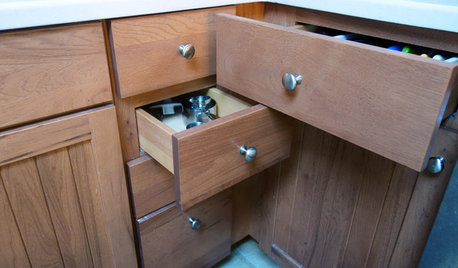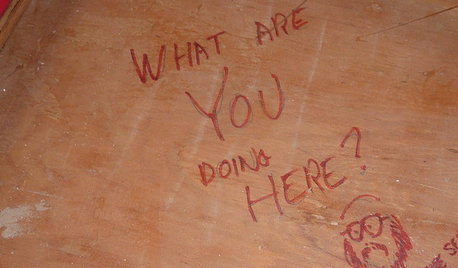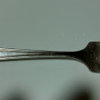What does this belong to?
rcb1023
13 years ago
Related Stories

DECLUTTERINGDownsizing Help: How to Edit Your Belongings
Learn what to take and what to toss if you're moving to a smaller home
Full Story
MOST POPULARWhen Does a House Become a Home?
Getting settled can take more than arranging all your stuff. Discover how to make a real connection with where you live
Full Story
FUN HOUZZ10 Truly Irritating Things Your Partner Does in the Kitchen
Dirty dishes, food scraps in the sink — will the madness ever stop?
Full Story
FUN HOUZZDoes Your Home Have a Hidden Message?
If you have ever left or found a message during a construction project, we want to see it!
Full Story
FEEL-GOOD HOMEDoes Your Home Make You Happy?
How to design an interior that speaks to your heart as well as your eyes
Full Story
BEDROOMSIdeabook 911: Desks in the Bedroom — Yea or Nay?
Does a Desk Belong in Your Sleeping Quarters? 14 Reasons to Say Yes
Full Story
FUN HOUZZHouzz Quiz: What Style of House Should You Live In?
Does your heart belong to midcentury, traditional, farmhouse or something else? Take our quiz to find out
Full Story
THE ART OF ARCHITECTUREDesign Workshop: Wonderful Material Marriages
See why some materials — concrete and wood, glass and paint, brick and steel — just belong together
Full Story
BATHROOM DESIGNHow to Build a Better Shower Curb
Work with your contractors and installers to ensure a safe, stylish curb that keeps the water where it belongs
Full Story
HOUSEKEEPINGLower Your Heating Bills With Some Simple Weather Stripping
Plug the holes in your house this winter to make sure cold air stays where it belongs: outside
Full Story









lindac
lazy_gardens
Related Professionals
Bridgeport Furniture & Accessories · Alpharetta Furniture & Accessories · Annandale Furniture & Accessories · Detroit Furniture & Accessories · Hawthorne Furniture & Accessories · Los Gatos Furniture & Accessories · Robbinsdale Furniture & Accessories · Fernway Interior Designers & Decorators · Beloit Painters · Fenton Painters · Hartford Painters · Torrance Painters · Topeka Furniture & Accessories · Dumont Furniture & Accessories · Kingsburg Furniture & Accessorieslazypup
rcb1023Original Author
rcb1023Original Author
lazypup
rcb1023Original Author
sunnyca_gw
sombreuil_mongrel
lazy_gardens
rcb1023Original Author
jemdandy
lazypup
rcb1023Original Author